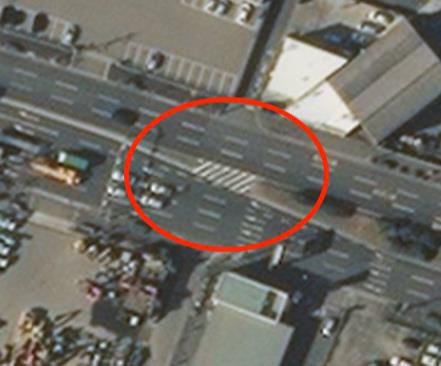Introduction
Welcome to rating in an unsupported locale. While it is not expected that you have experience to rate an unsupported locale, it is very important that you take the time to familiarize yourself with each new locale before you begin rating. Even if you share a language, things may be very different than your home country. This document will guide you in gathering the information you will need to successfully rate in unsupported locales.
Per the Maps Search Guidelines 8.1.1/Autocomplete Guidelines 7.1.1, “If no official resources can be found, rate according to consensus from multiple reliable sources… Please avoid resources such as data aggregators and spammy directory sources. Some resources, like data aggregators, spammy directory sources, etc., are unreliable, and consensus between unreliable resources should be disregarded.”
Many markets use claimed social media pages instead of actual websites; per Search GLs 6.2 and 8.1.1 /AC GLs 5.2 and 7.1.1 these can be considered official resources.
To verify pins in a new market, some reliable sources are up-to-date government or cadastral maps. These usually have property lines drawn and identified, which makes it easier to identify the correct rooftop in our satellite view. Additionally, third-party on-line maps and street imagery websites may be reliable, up-to-date resources.
Likewise, when rating Pedestrian or Driving Routing, be sure to research and compare satellite imagery in TryRating to third-party global and local on-line satellite maps and street imagery websites to check for roadway changes (e.g. construction detours, new road geometry). When using third-party resources, be sure to use the most up-to-date sources available.
Since prominence can vary based on the test locale, pay special attention to the general list of prominence in Search GLs 5.3/AC GLs 4.3.3. To determine national, regional, and local prominence in both AC and Search, research the result’s popularity, as instructed in Search GLs 5.3.
To check the population density of the area surrounding the location intent (Search GLs 5.4-5.5/AC GLs 4.3.4), consult the most up-to-date satellite imagery you can find.
Keep in mind that an Autocomplete suggestion might make sense for your home country but not for this test locale, even if you speak the same language. For example, both the United States and Great Britain speak English, but a suggestion of “french fries” for a query string of “fre” may not be relevant to a British user, as they refer to the same food as “chips.” After conducting some research, adjust your relevance ratings to fit what would be most useful for the user in the test locale.
The first step in rating addresses in an unsupported locale is to figure out how addresses are structured. To help you identify the mandatory address components, some good resources are the postal service, government maps, and land registry/cadastral records.
Additionally, organizations like the Universal Postal Union have resources on addressing systems for their member countries.
It is also helpful to find consensus among chain businesses for the general address format of a locale (e.g. if most of them include the sub-locality, it’s probably a mandatory component).
Lastly, blogs and online forums for expatriates can have information on how addressing works, explained in a way that people unfamiliar with the locale can understand. A search engine query like “expat blog [LOCALE]” should return useful results.
Once you understand how addresses are structured, do your best to match address components to the TryRating interface. If you encounter a component with no obvious match, consider the following examples:
Result Address | Official Address | Rating and Explanation | |
The Button Box | West House | Address Accuracy | Incorrect – Street Number |
17 Patrick Street Mullingar, Co Westmeath N91 EW6D Ireland | 17 Patrick Street Mullingar, Co Westmeath N91 EW6D Ireland | Some address results in Ireland may list a building or estate name. The building/estate name must be correct. Here, the building name is incorrect. Even though a full address is present, the address is rated Incorrect – Street Number | |
30 David Street 30 David Street Dunedin 9012 New Zealand | 30 David Street 30 David Street Caversham Dunedin 9012 New Zealand | Address Accuracy | Incorrect – Country Specific Issue |
The official address-finder site confirms that this is a suburban address in New Zealand with a sub-locality. Our result is missing the sub-locality and is rated as Incorrect – Country Specific Issue | |||
When rating Relevance for a query that includes a diacritic, consider results/suggestions that contain the diacritic to be relevant. Because the user took the time to type in the diacritic, results/suggestions that do not contain the mark should generally not be considered relevant. Exceptions to this would be if there are no possible matching results/suggestions that contain the diacritic or if including the mark is a common misspelling.
When rating POI/Business names, rely on the official resource to verify correct diacritics and rate according to Search GLs 6.3/AC GLs 3.1 as a minor or moderate misspelling.
When rating address components, consult official sources like the national postal service, street imagery and government resources in the locale. For example, if a diacritic is verifiable via the national postal service, it should be marked Incorrect if missing or incorrect. If there is no consensus among the postal service, street imagery or official resources, missing or incorrect diacritics do not merit an Address rating of Incorrect (See Search GLs 7.1.3-7.1.4/AC GLs 6.1.3-6.1.4).
Remember that if an address contains a mix of scripts or languages, you should mark Incorrect – Language/Script issue.
Your own government’s foreign ministry may have country guides for travelers with advice on driving and walking around specific countries. For example, the US State Department offers guides for other countries that highlight differences between US driving and pedestrian laws/customs and each country. On this website, you would search by country and then under the section “Travel and Transportation” for such information.
Take some time to familiarize yourself with the meaning of road markings and signs in this locale. Pay special attention to signs for street directionality (one-way vs. two-way), turn restrictions, vehicle restrictions, and timeof-day restrictions, as these often come up in rating and do not look the same in every locale. Sometimes, the sign is the same or similar but means something different. In addition to local laws and driver manuals, online encyclopedias are a good resource for this information.
Road Sign Examples
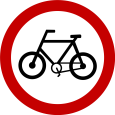 |
| 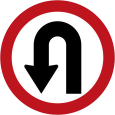 | 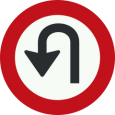 |
Bicycles Only Brazil | Bicycles Prohibited Estonia | U-turn Only Colombia | U-turn Prohibited Netherlands |
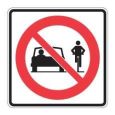 Do Not Overtake Bycicles United States | 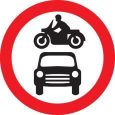 Motor Vehicles Prohibited United Kingdom | 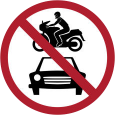 Motor Vehicles Prohibited Thailand | 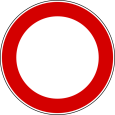 Limited Traffic Zone (Vehicles Prohibited) Italy |
 Do Not Enter United States | 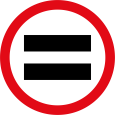 Do Not Enter Botswana | 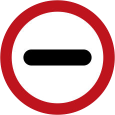 Checkpoint Ahead Chile |  Do Not Enter Saudi Arabia |
Likewise, colors and patterns of lane and road markings can be the same or similar but mean something different. Always refer to local laws and regulations to understand their legal meanings.
Road Marking Examples | |
Zebra Zone – Crossing Permitted Japan | 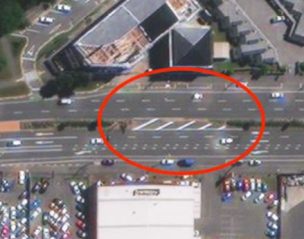 Flush Median – Crossing Permitted New Zealand |
Flush medians painted with solid stripes, also known as zebra zones, act as physical barriers and are illegal to cross in countries like Belgium, Sweden, Hungary, and Italy; but in countries like Japan and New Zealand, shown above, the painted median is perfectly legal to cross. | |
The first thing you should check is what side of the road this locale drives on. This is especially important when you encounter traffic circles and divided/dual-carriage roads in rating.
Second, check the national traffic code for maneuvers that are always illegal in the locale. For example, in some locales, all U-turns are illegal. However, keep in mind that even if a maneuver is illegal in your locale, it may be legal here and vice versa.
If you notice the same strange maneuver occurring in several routes, it may be an indicator that you need to do some locale-specific research. For example, you may notice that instead of a simple left turn, the route has the user make three right turns. Once you research this, you may discover that in this locale, left turns on dual carriageways are illegal, so these strange routing instructions are expected behavior.
Third, consult tourist/expat blogs and forums for driving tips. Also, search engine queries like “Driving in [LOCALE],” “right of way [LOCALE],” and “traffic priority [LOCALE]” should return useful results.
Consider that some countries ban private vehicles on certain street types, during certain times of the or certain days of the week, etc. Check for country-wide laws as well as laws pertaining to major metropolitan areas.
Tourist/expat blogs and forums as well as search engine queries like “Pedestrian Law in [LOCALE],” and “Pedestrian Right of way [LOCALE]” will help you determine if pedestrians are allowed on highways, through public/private land, walking on the road versus only on the sidewalk, crossing a road without a crosswalk, etc.
Remember that routes must not only be legal, they must also be safe.

